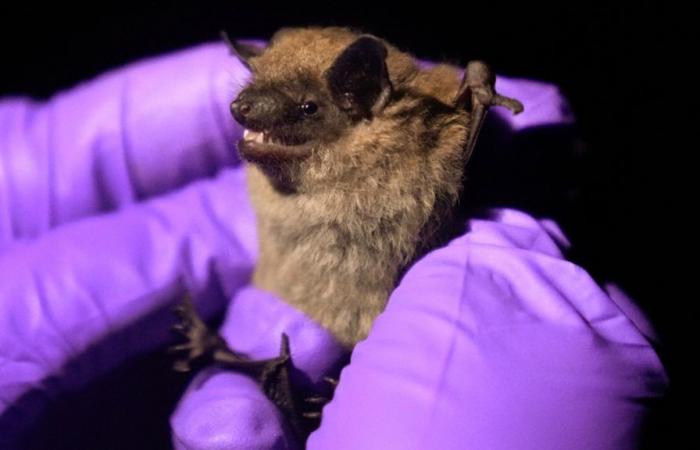Officials warn that bats across the country pose a risk, while the deadly disease is also present in some populations of skunks, raccoons and foxes.
This text is a translation of a CTV News article.
“Rabies has been around for a long time and will continue to be around for a long time,” infectious animal disease expert J. Scott Weese told CTVNews.ca. “It is present in various wildlife species in Canada, and we are not going to eliminate it. So it’s just a matter of being aware of the risk and knowing what to do.”
Mr. Weese is a professor and head of infection control at the Ontario Veterinary College at the University of Guelph. According to him, although cases of human rabies remain very rare in Canada, without rapid medical intervention, the disease is “invariably fatal.”
“We have good ways to control rabies and excellent ways to prevent it after exposure,” he said. “It’s usually a lack of recognition: someone encounters a wild animal, doesn’t realize it could be rabies, and therefore doesn’t seek help to prevent the disease .”
Here’s what you need to know about the disease and its treatment.
How is rabies spread?
Infected animals transmit the rabies virus through their saliva, most often through a bite. In the case of the Ontario child, the parents saw no signs of a bite or scratch after finding the bat and therefore did not seek immediate medical help.
“If it’s a bigger animal and a bigger bite, people pay attention to the bite because it’s big and it hurts. In the case of a bat bite, the bite is very small and you don’t even notice it because their teeth are very small.”
– J. Scott Weese at CTV News
How dangerous is rabies?
The recent death in Ontario is the first case of domestic human rabies in the province since 1967 and only the 28th case recorded in Canada in the last century. All of these cases were fatal. The five most recent cases since 2000 were recorded in Ontario, British Columbia, Alberta and Quebec.
“The chances of recovery after the appearance of signs of rabies are very low,” warned Mr. Weese. “Rabies is one of the worst diseases you can get, whatever it is, because you almost always die from it.”
An estimated 59,000 people die from rabies each year worldwide, with 95% of cases occurring in Africa and Asia. About 99% of human cases begin with a bite from an infected dog. Canine rabies is not present in Canada.
Which animals carry the disease?
All cases in Canada since 1967 have involved bats, which are the most widespread species in Canada.
The disease has also been detected in skunks in Saskatchewan, Manitoba and Ontario, in raccoons in Ontario, Quebec and New Brunswick, and in foxes in Nunavut, the Northwest Territories and the northern regions of Quebec, Manitoba and Labrador.
Weese says the disease has also been detected in foxes in Ontario, while raccoon rabies in Canada is mainly limited to the St. Catharines region. However, due to the presence of bats, risks remain throughout the country.
“A raccoon can still get rabies from a bat,” he added. “The other thing with raccoons is that there is a lot of raccoon rabies in the United States and it can always sneak back in.”
Mr. Weese’s overall message to Canadians is simple: don’t touch wild animals.
“Wild animals are fun to watch. But the temptation is great to try to feed them, help them or touch them, which is bad for them and for us.”
How to get treated?
Acting quickly is key to survival, Weese says, and that includes contacting local health authorities as soon as you’ve been bitten, scratched or exposed to a potentially infected animal.
Treatment usually begins with the administration of antibodies to neutralize the potential virus, followed by a series of four vaccines given in the arm over a two-week period. These vaccines must be administered before symptoms appear, which can take anywhere from a few days to a few months(opens in a new tab). Early symptoms, such as fever and headache, may lead to others, such as seizures and hallucinations, before death.
“The treatment is very effective and very simple, and I have experienced it with my family,” said Mr. Weese. “We were exposed to rabies in our home years ago. So we all, the kids, did post-exposure prophylaxis and it’s very simple.”
Are pets also at risk?
Rabies vaccinations are required for dogs and cats in Ontario, and are largely part of routine vaccinations for pets in other parts of Canada. If your pet has been in close contact with a potentially infected animal, you should contact a veterinarian for a rabies vaccine booster.
“We try to boost their immunity, then they can be placed under observation or quarantine, depending on their vaccination status,” said Mr. Weese. “That’s another reason why we want dogs and cats to be vaccinated, because in the event of exposure, if they’re properly vaccinated and they get a booster shot, their quarantine period is pretty minimal and pretty easy. If they are not vaccinated, the quarantine can be long.






